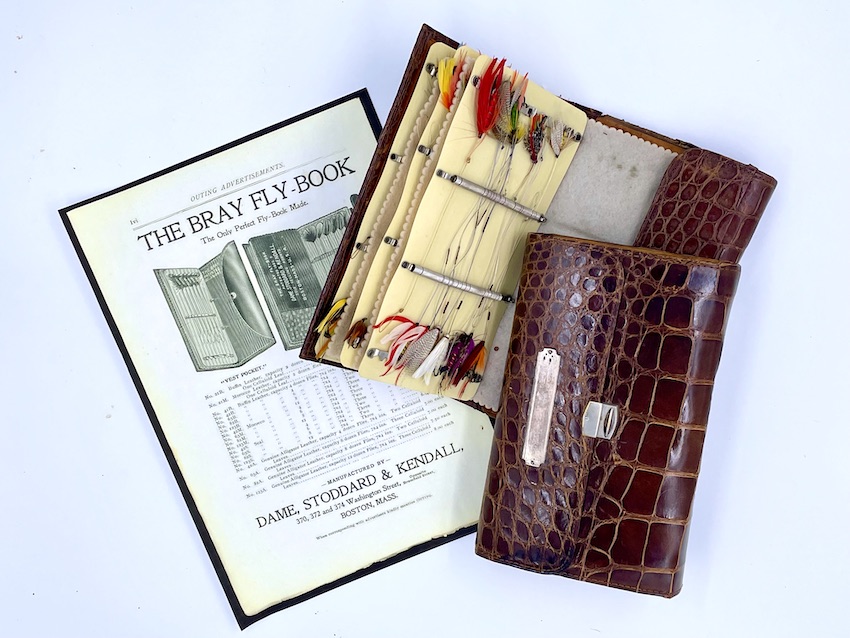
Collectors of antique and collectible flies have spent many years rummaging through countless fly wallets, sometimes casting them aside or discarding them once they have harvested the flies inside.
There are many fly wallets that are collectible in themselves, and there is something very satisfying about finding not only a superb wallet but one with many unfished wet, dry trout or salmon flies inside.
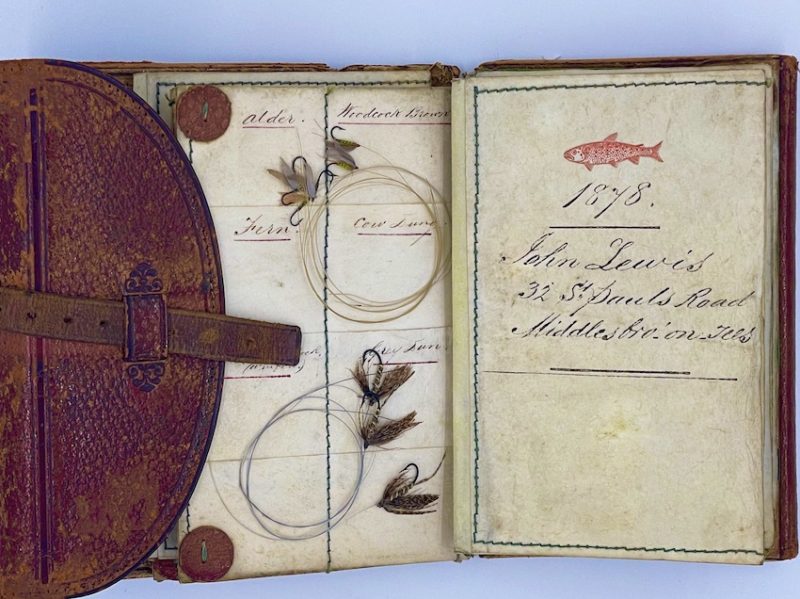
Some of the more intriguing models of fly wallets include many pockets for tools and other accessories and some are monogrammed or inscribed with the name of the owner, providing potentially valuable provenance for the find.
There are many varieties of wallets, often crafted of leather and including parchment or celluloid leaves inside with pockets, clips, or springs to store the flies and leaders. Sprays of wet flies tied to leaders were often stored in parchment pockets and labeled and stored according to pattern or tier.
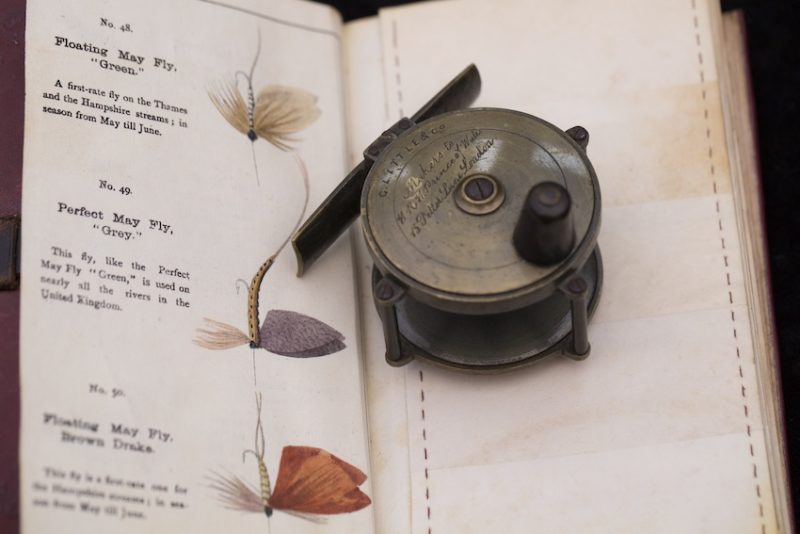
Some early British authors also designed fly books complete with reference collections of flies with their descriptions and sometimes with elaborate hand-colored illustrations. One of the most notable English examples are Alfred Ronald’s fly wallet “Companion” to his “Fly Fishers’ Entomology”, which was one of the first comprehensive works related to the entomology associated with fly fishing, produced in 11 editions from 1836 to 1903.
The other was Francis Walbran’s “Wharfdale Fly Book Containing Names and Directions for Using 48 Standard Patterns of Flies, Used upon the Wharfe, Yore, Nidd, and Other Celebrated Trout and Grayling Streams” with vellum pages, produced in 1888.
Both of these storied wallets included flies arranged by type of insect imitation and season.
Elaborate presentation wallets were also crafted for the famous Exhibition of 1851 at the Crystal Palace in London.
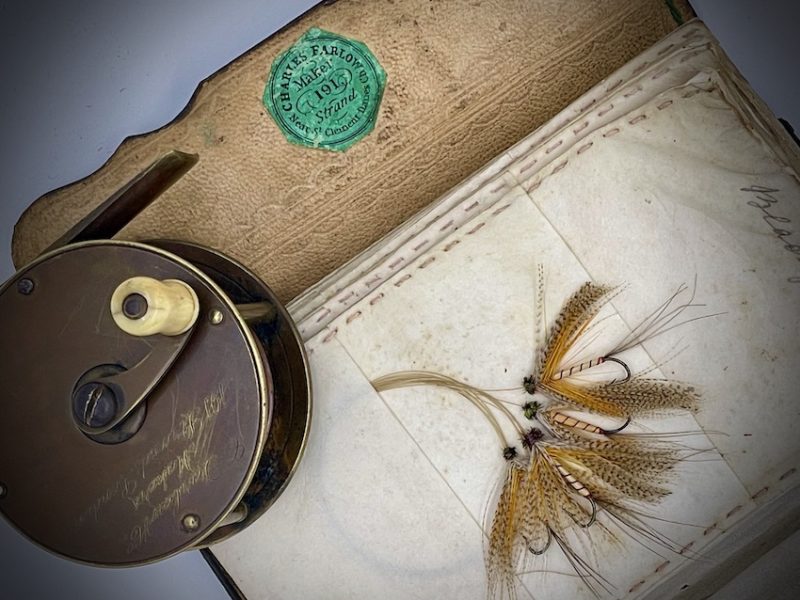
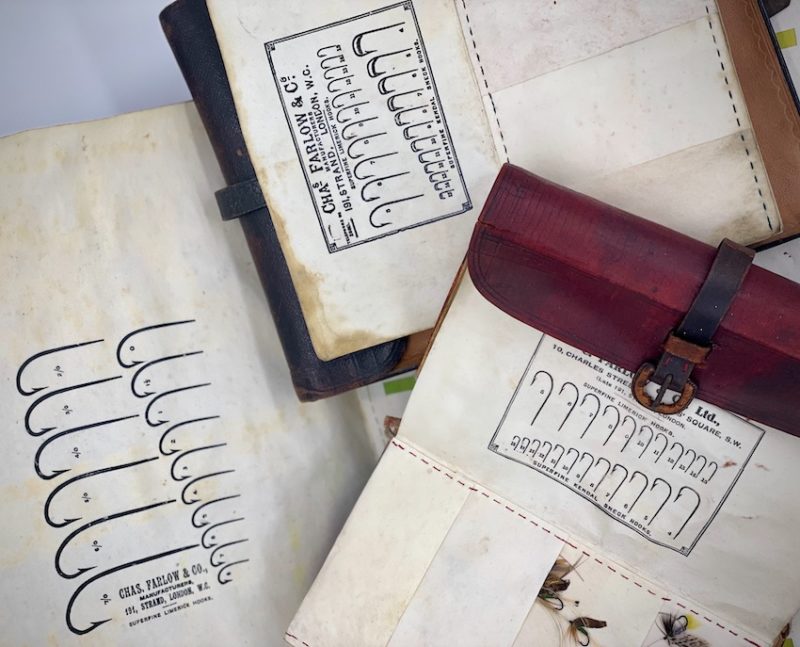
Farlows of London also produced a series of wallets with vellum pages containing graphics of the common hook sizes of the time. These wallets were produced in smaller trout and very large, oversized salmon fly versions.
This early wallet from Scotland includes sprays of trout flies tied and retailed by Scottish fly tier Frances Hogg of Edinburgh.
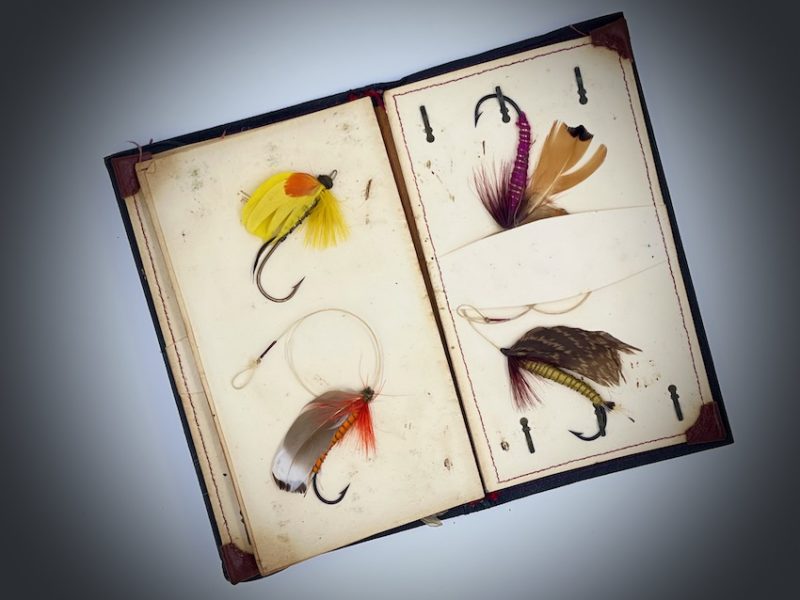
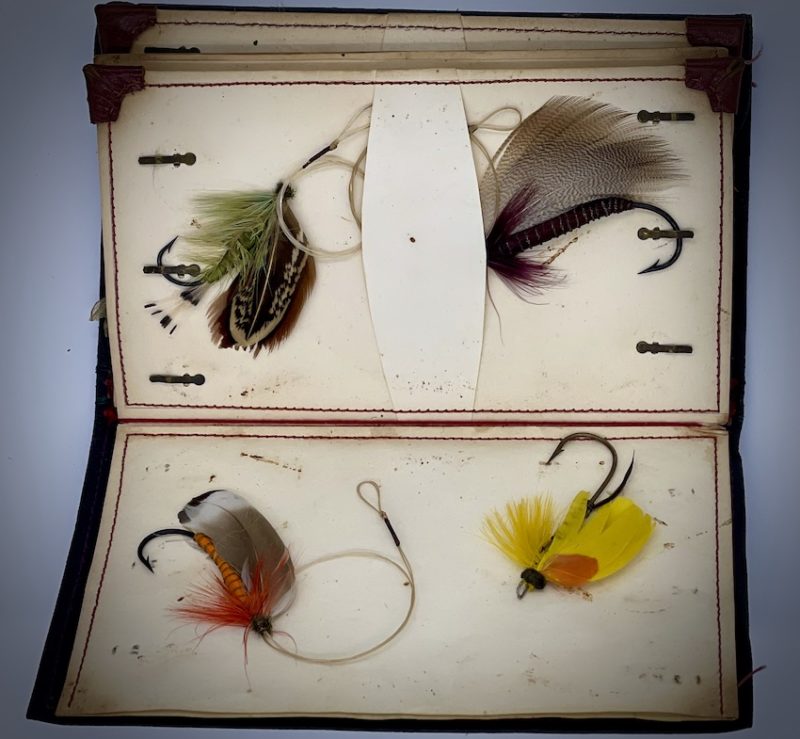
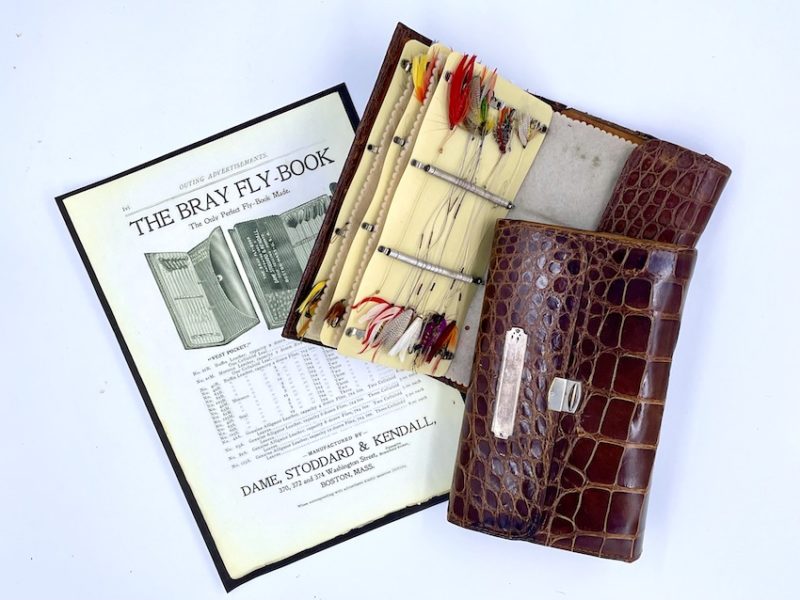
Early American fly wallets included trout flies and bass flies often tied directly to gut leaders. The popular Bray Wallet was sold by Dame, Stoddard and Kendall and other early retailers in 18 different models, from a vest pocket version for a few dozen flies to buffin leather, seal skin and an elaborate alligator skin model for over twelve dozen flies, complete with a Sterling silver clasp.
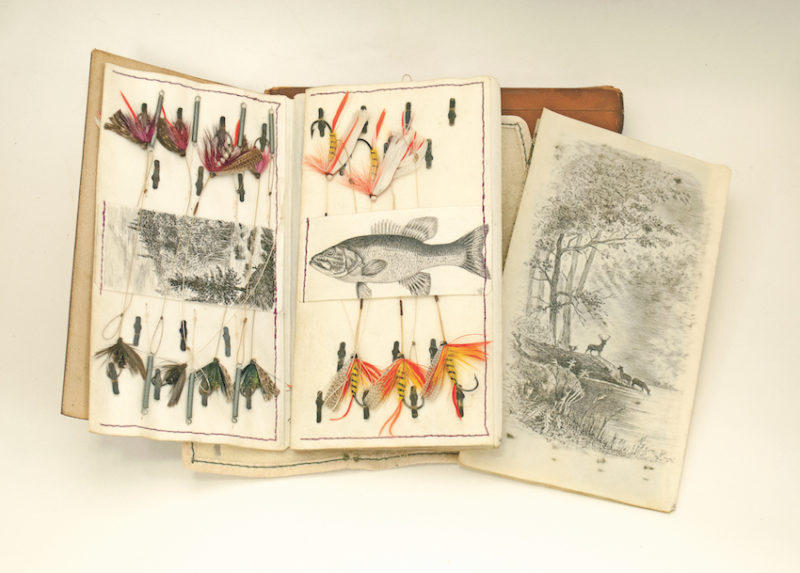
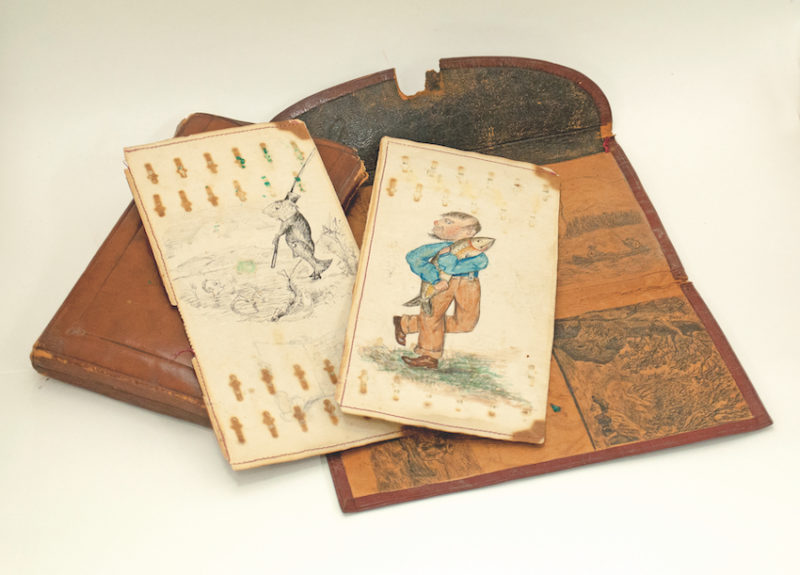
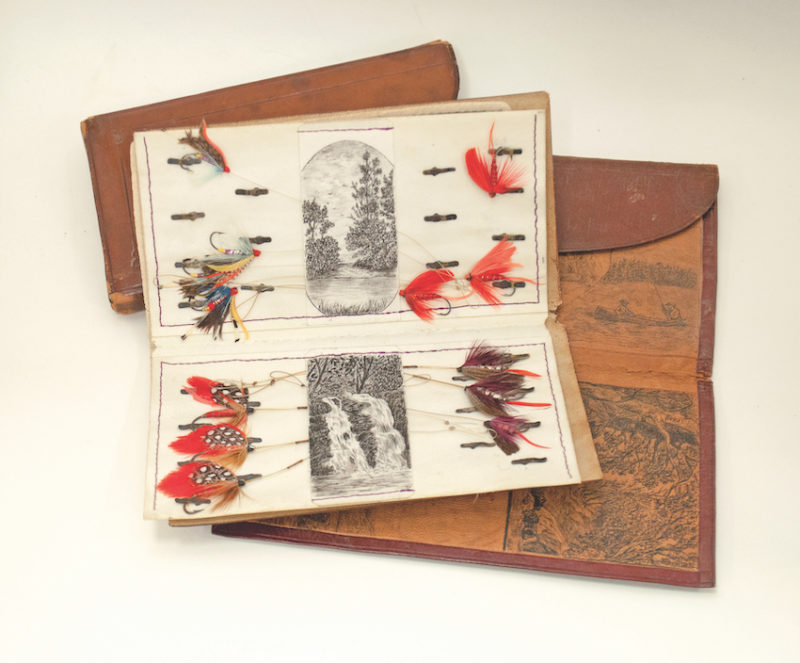
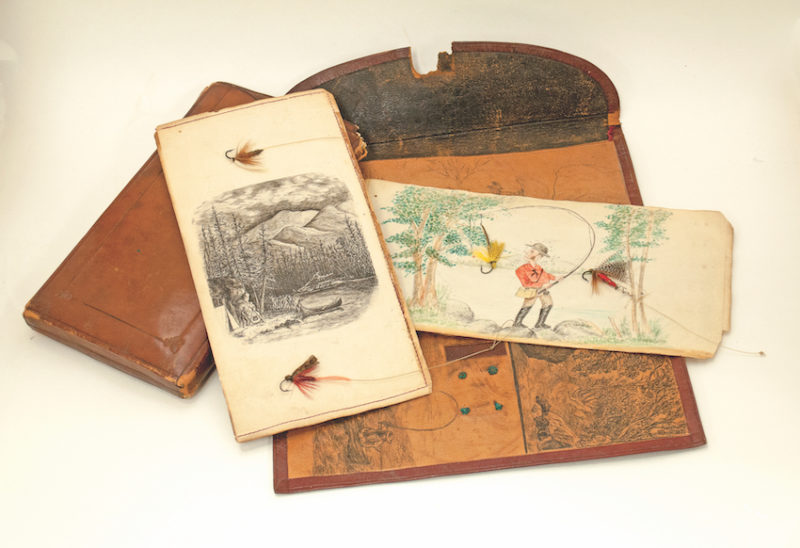
Perhaps the most beautiful early American fly wallet is the Livingston wallet collection from the American Museum of Fly Fishing. The wallets belonged to Robert LaRhett Livingston (1844-1907) and his son Robert Forsyth Livingston (1886-1950). The Livingstons inscribed the wallets with memories from their many fishing trips along with flies accumulated over 70 years.
There are many tales of items found in fly wallets, including fly patterns, streamside notes, phone numbers, photos, calendars and train schedules, and even the odd fly fishing treasure.
So, next time you see an old fly wallet, take a close look inside.
Steve Woit is the author of “Fly Fishing Treasures: The World of Fly Fishers and Collecting”, a book featuring profiles of 30 experts and collectors and over 800 photographs of rare and collectible fly rods, reels, flies, books, and ephemera.





